Home>Christian Resources>Notable Christian Art Around The World
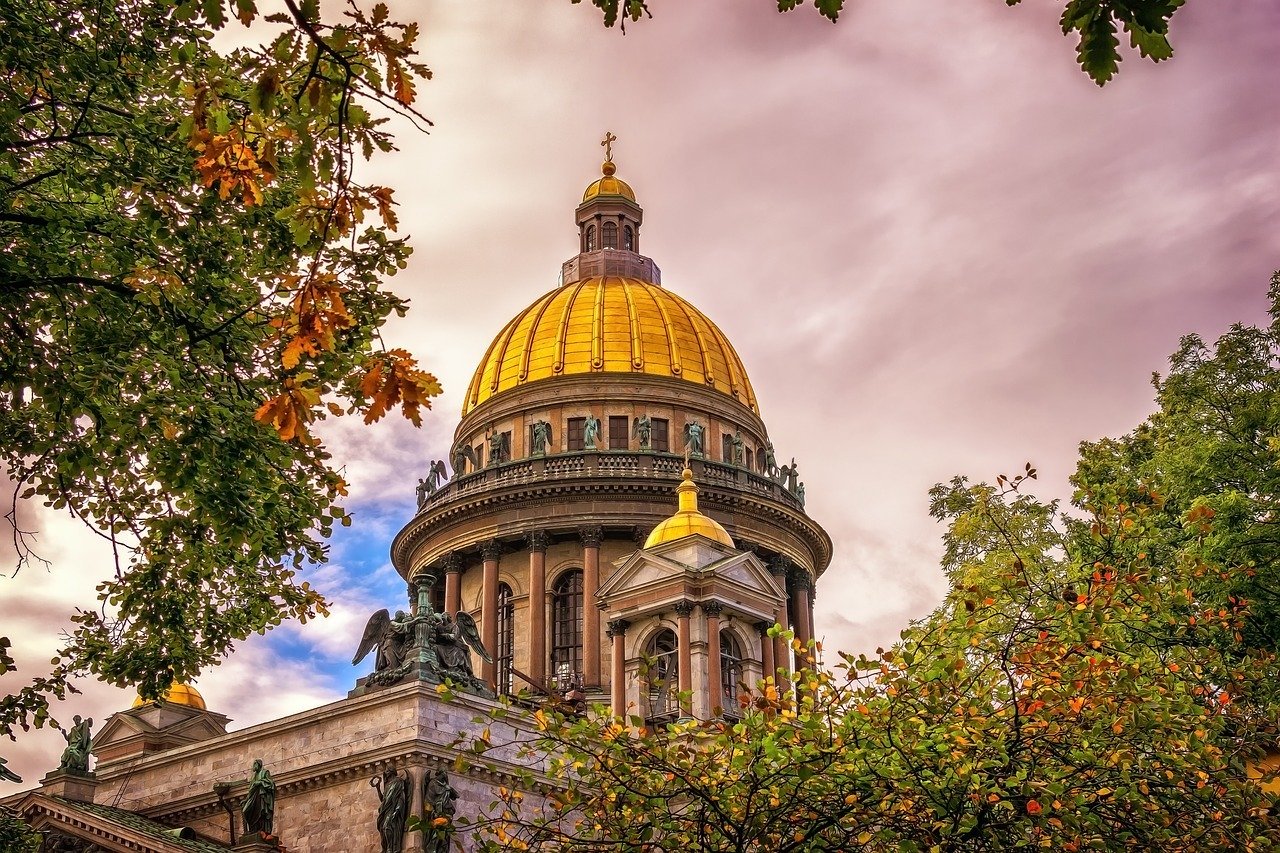

Christian Resources
Notable Christian Art Around The World
Modified: January 9, 2024
Peter Smith, Editorial Director at Christian.net, combines deep insights into faith, politics, and culture to lead content creation that resonates widely. Awarded for his contributions to religious discourse, he previously headed a major organization for religious communicators, enhancing dialogue on faith's societal impacts.
Christian art plays a significant role in attracting believers to Christianity. Know this art and its popular artworks that have made a huge impact on us.
(Many of the links in this article redirect to a specific reviewed product. Your purchase of these products through affiliate links helps to generate commission for Christian.net, at no extra cost. Learn more)
Art is a platform in which people use to express their traditions and beliefs. It also plays a huge part in our understanding of history and how it has created an impact on us today. We can express art in various ways, including painting, architecture, performance, sculpture, and more. In Christian history, Art has also helped Christians build and establish their identity. Christian art has let them share their faith and beliefs to a wide audience.
Firstly, what is Christian Art?
Christian Art is a sacred art that features themes and imagery from Christianity. This type of art commonly uses images of Jesus Christ and narratives from his life as subjects. The Old Testament also plays a part in most denominations. However, images of the Virgin Mary and saints are much rarer in Protestant art than in Roman Catholicism and Eastern Orthodoxy.
And to understand more about Christian art, we unveil interesting facts that you must know about it.
The Origin of Christian Art
Started first by Jesus’ apostles after his ascension, the Christian Church gradually turned into an organization. Not surprisingly, it later became the largest and most influential patron of arts. The church used various types of art to create an identity for itself. Christian art had also helped the church rise to power as the beauty of the art attracted old and new worshippers. Christian Art started when the church developed its Christian iconography. It heavily relied on sculptures, paintings, architecture, and various decorative arts. This also includes mosaics, stained glass, and illuminated manuscripts.
In 313 AD, Christianity was finally permitted to exist. Roman Emperors Constantine and Licinius issued the Edict of Milan. This edict officially legalized Christian worship, and by 380 A.D., Christianity became the empire’s sole authorized religion. However, during the 5th century, it experienced pressure from barbarian attacks. Hence, the Roman Empire split into halves: east and west.
Centered in Constantinople, the eastern half adopted the Eastern Orthodox Church. It became popular for its iconic painting and mosaics. The western half, which remained in Rome, continued to follow the Roman Church, which blossomed under Charlemagne and the Ottonians. The church fully re-established itself with its huge building campaign of Romanesque and Gothic Cathedrals. In 1517, the Dutch pastor, Martin Luther, launched the religious revolution, known as the Reformation. It culminated in the formation of a more modest, less hierarchical form of Christianity. They recognized it as Protestantism. Christian art encompasses both Roman Catholicism and Protestantism, including the Eastern Orthodox Church.
Early Christian Art in Rome

Early Christian art was relatively scarce because many Christians were still persecuted. Consequently, most Christian Roman art remained as part of underground culture. Christian art featured a simple architectural design over the graves of martyrs. It included sarcophagi, carved with various emblems or reliefs of various biblical figures. Christian painting or early sculpture used motifs from both Roman and Greek Art.
When Christianity was legally permitted, religious art exploded. They used the architectural design of the basic Roman Basilica to build new churches. Most interior decorations of the religious buildings included mosaics and mural paintings. The sculptural decoration of sarcophagi became more intricate. On the other hand, the designs didn’t include sculpture in the round for the fear of creating pagan-style idols. Relief sculpture in stone was a standard, yet ivory carving was also a popular medium.
Overall, the 4th century witnessed the evolution of Christian art. They used richer materials, as well as the development of precise narrative sequences. A great example of this art evolution is the mosaics of Santa Maria Maggiore in Rome.
Byzantine Art
Known as the art of the Eastern Orthodox Church, Byzantine art was the first category of Christian Art to blossom. It specialized in architecture, mosaic art, mural, and icon painting. Many artists also excelled at making jewelry, goldsmithing, and ivories. Likewise, they produced the earliest illuminated manuscript or codex.
In 535, Justinian I, Byzantine Emperor, and his armies invaded Italy and conquered Ravenna. As a result, the Exarch of Ravenna instigated a major building program of churches in the city along with its port township of Classes. The two popular churches were the Basilica of San Vitale and the Basilica of Sant’Apollinare in Classe.
The Basilica of San Vitale

The architectural design for Basilica of San Vitale combines a Roman dome, the shape of doorways and stepped towers, with Byzantine elements. It includes a Byzantine polygonal apse, complex carved capital, and narrow bricks. In addition, the church is famous for its Byzantine mosaics. It is the most spectacular and best-preserved mosaic art outside Constantinople.

The church’s mosaic art contains Biblical art from the Old Testament. On the side-walls are mosaics of the respective symbols of the four Gospel authors, Matthew, Mark, Luke, and John. Furthermore, it also has other mosaics decorations.
The Basilica of Sant’ Apollinare in Classe

The outside of the church features a large facade with two uprights and a single mullioned window. Later, they added a narthex and the distinctive round bell-tower that makes up the earliest example in Italy of the decorative use of majolica. It also has a nave, which features 24 columns of Greek marble topped by magnificent carved capitals, and two aisles. At the end of the church is a polygonal apse, flanked by two chapels, with a beautiful mosaic illustrating the Transfiguration of Christ. Elijah and Moses, along with the four bishops who built the main basilicas in Ravenna, Ursus, Severus, Ursicinus, and Ecclesius. They decorated both the upper and lower areas of the triumphal arch of the Basilica with mosaics. The Basilica’s mosaic iconography is related to the struggle against the Catholic heresy of Arianism.
Read more: The World’s Top 20 Christian Christmas Songs
The Four Major Churches in Constantinople
The Byzantine architecture achieved its distinctive forms during the time of Justinian I. They built four major churches in Constantinople. These are the Basilica of Saints Sergius and Bacchus, the Basilica of Saint Irene, the Basilica of the Apostles, and the Basilica of Hagia Sophia. The design for the Basilica of the Apostles was replicated in St. Mark’s Cathedral in Venice.
The Basilica of Hagia Sophia

The Basilica of Hagia Sophia is well known for its history. The structure comprises a crowned massive dome. It carried its weight to the corner piers by revolutionary concave triangular sections of stone, called pendentives. The decorations also include gold mosaics and multicolored marble. The Basilica of Hagia Sophia served as a huge inspiration for later buildings in the Middle East, including the Sultan Ahmed Mosque.
Mosaic Art
Mosaic art was the most important feature of Byzantine art or Christian art for a thousand years. It is often shimmering in the candlelight and sometimes decorated in gold leaf. Mosaic artists created these pieces using the exquisite glass jigsaws. It depends on the color, size, and composition of the glass. It has two key aims: to beautify the house of the Lord and to educate illiterate worshippers in the story of the Gospel.
Until today, Ravenna remains the best single source of surviving mosaics. In Istanbul, the floor mosaics at the Imperial Palace, the South Gallery mosaics in Hagia Sophia, and the Dormition of Mary mosaic (Church of the Chora Monastery) are part of the popular mosaic pieces.
Wall Paintings for Christian Art
When the economic difficulties rose, wall painting became a widespread alternative for mosaic art. As a result, it was substantially cheaper than mosaics and reserved for poorer churches. Yet, they characterized wall painting as a large-scale architectural composition. Byzantine muralists typically used an entire wall as their canvas. They filled it with narrative detail without regard to principles of time and place.
Read more: Christian Parties Around the World
Medieval Christian Art
In 400, Western Europe entered the Dark Ages, a period of political uncertainty and cultural stagnation. It limited the influence of Christianity. However, it flourished in Ireland, when the country was cut off from the European mainland. The Irish Monastic art and culture kept the ideas of classical antiquity as well as the message of the Bible alive.
Oldest Irish Illuminated Manuscript: Cathach of St. Columba

The illuminated manuscripts dominated the early Medieval art in Ireland. The Cathach of St. Columba is one of the earliest Irish illuminated manuscripts and a treasure of early Christian art. The manuscript, a vellum Psalter, is both damaged and incomplete. It has 58 folios/pages and up to 200 x 130mm in size. It features the text of Psalms 30:10 to 105:13 in Vulgate Latin. Above, the text of the Psalms appeared an interpretative heading written in Old Irish. It makes the Cathach as the oldest surviving Irish manuscript written in Gaelic and the world’s second-largest collection of Psalms.
High Cross Sculpture
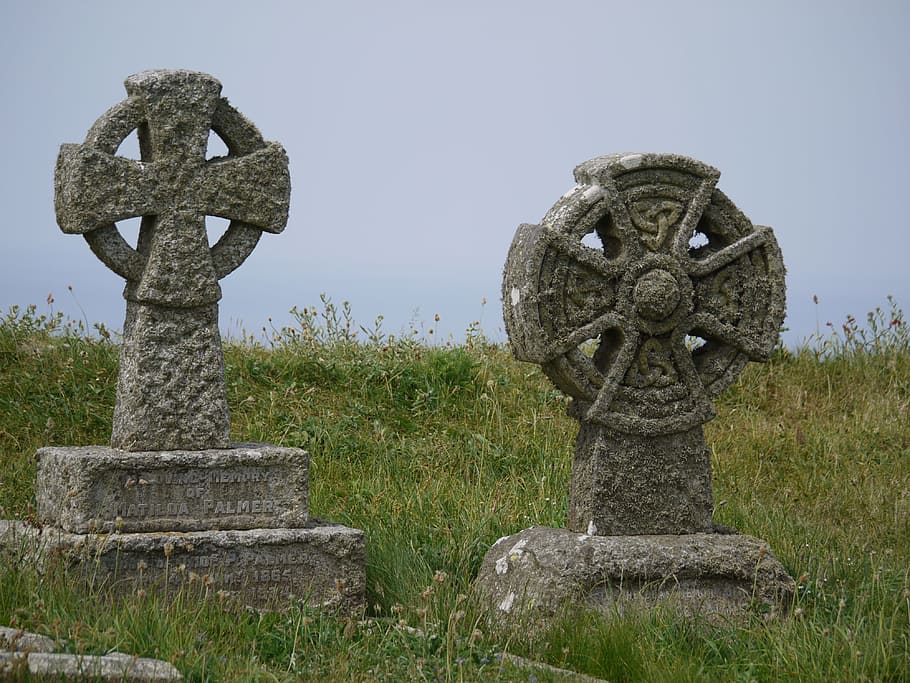
High Cross Sculpture was the third Christian art that appeared in Ireland during the Middle Ages. The sculptures comprise different-sized monuments. It is all based on the standard design of the Celtic-Cross. Moreover, the decoration included either abstract patterns or narrative scenes from the Bible. These monuments make up the most important set of free-standing sculptures produced between the fall of Rome and the start of the Italian Renaissance.
Romanesque Church Architecture

Classical Roman designs largely inspired Romanesque architecture. A new monumentality also characterized it, marking the growing stability of the age and the renaissance of European Christian culture. For example, some of the most popular Romanesque churches and religious buildings include Cluny Church II and Monastery Church of St. Pedro de Roda.
The Romanesque architects relied upon stained glass, mural paintings, and sculptures to decorate their churches. They concentrated the stained glass production in centers like the Rhineland and the Ile-de-France and Poitiers. Framed for the first time in lead, they based the designs on strong color contrast (blue, red, and yellow). Famous examples include glass windows like The Prophet Hosea (south wall of Augsburg Cathedral) and The Crucifixion of Christ (Poitiers Cathedral). They used murals to educate the illiterate churchgoers. Styles were typically dynamic and animated, while Spanish artists used a mixture of Spanish and Islamic art for their Romanesque murals. Sculptures appeared on the exterior of most of the churches in a static or wooden style.
For instance, one of the widely known Romanesque artists is the sculptor Gislebertus, recognized for his relief work on the portals of Saint Lazare Cathedral, Autun.
Gothic Architecture

Another widely recognized Christian art is Gothic art, which still revolved around architecture. It rose with the revival of Science and Mathematics, notably Euclidean geometry. The structure displayed soaring vaults, huge stained glass windows, and spacious, well-lit interiors. In addition, it featured pointed arches to spread the weight of the ceiling and revolutionary flying buttresses to support the walls.
Various column statues and relief figures from the Old Testament were the other important features of the architectural sculpture. It still included depictions of Jesus Christ and other members of the Holy family. Nicola Pisano and Arnolfo di Cambio were some of the greatest sculptors at that time.
Gothic Illuminated Manuscripts

Sculpture heavily influenced gothic painters. They were busy creating works of religious art, but not inside churches. They focused on illuminated manuscripts such as the French Bible Moralisees, Le Somme le Roi, the Manesse Codex, and others. These are just some Books of Hours, Missals, Psalters, Apocalypses, Bibles, and other illuminated gospel texts.
Les Tres Riches Heures du Duc de Berry, 1416

At the end of the Gothic era, International Gothic emerged as a rich style of art among the royal courts of Europe. It acted as a kind of bridge between Gothic and Renaissance culture. The style exemplified by a range of Christian illuminations. Les Tres Riches Heures du Duc de Berry, by Limbourg Brothers, was considered being the finest example of Medieval manuscript illumination back then. It is an exquisite, richly decorated Book of House, one of the most famous of all International Gothic Illuminations.
Christian Art During the Italian Renaissance

Giotto and Duccio de Buoninsegna dominated Christian art in the pre-Renaissance era. The Scrovegni (Arena) Chapel Frescoes is Giotto’s greatest masterpiece. Duccio de Buoninsegna’s polyptych for Siena Cathedral, known as Maesta Altarpiece, created a significant impact back then.
Golden Age of Christian Art in Renaissance
During the Renaissance era, various paintings emerged from many different Renaissance artists. Similarly, the 16th century is also known as the Golden age of Christian art centered in Rome. Know some well-known religious paintings from the Renaissance era as we list art pieces that created an impact during that time.
The Flagellation of Christ

The Flagellation of Christ is Piero Della Francesca’s enigmatic work. It is also one of the greatest Renaissance paintings of the mid-quattrocento. Francesca used tempera/oil on the panel as his medium. Kenneth Clark, an art historian, ranked this painting among the ten finest paintings of all time. Additionally, this masterpiece is also renowned for its application of linear perspective.
The Last Supper

One of Leonardo da Vinci’s popular masterpieces, The Last Supper, is a complex rendering of the Biblical story. It illustrates a scene from the last days of Jesus Christ before the crucifixion, as described in the Gospel of John 13:21. Jesus declared to his twelve disciples that one of them will betray him, and the picture tries to depict the reaction of each disciple. Leonardo da Vinci’s mural painting mathematical and narrative symbolism, along with outstanding use of color and perspective. It is known as Il Cenacolo or L’Ultima Cena in Italian.
The Sistine Madonna

The Sistine Madonna, by Raphael, is also considered as a masterpiece of High Renaissance Painting; one of the last pictures Raphael completed himself, and the last of his Madonnas. The medium used for the painting is oil on canvas. The painting is currently installed on the high altar of Benedictine abbey church of San Sisto in Piacenza.
The Transfiguration
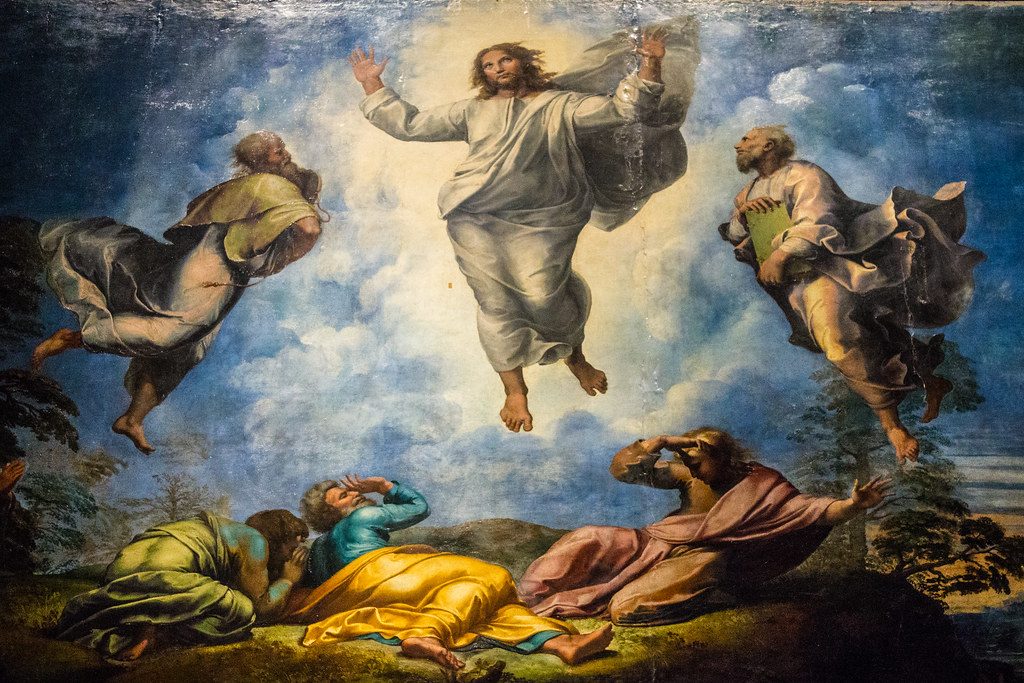
Also painted by Raphael, The Transfiguration illustrates the dual human and divine nature of Christ. This painting is considered to be one of many significant contributions to the Renaissance in Rome. Also, it is Raphael’s most ‘Mannerist’ painting, which expects the new idiom that would shortly succeed. In 1517, Cardinal Giulio de’ Medici commissioned the painting as an altarpiece for the French Cathedral of Narbonne.
Assumption of the Virgin (Parma Cathedral)

The Assumption of the Virgin at Parma Cathedral is the best-known magnificent art piece of Corregio. It was his second important dome fresco after his Vision of St. John the Evangelist. Corregio was the most important artist of the Parma School of Painting, who was a specialist in quadratura painting. He painted this masterpiece on the underside of the dome in the Romanesque Cathedral of Parma. And it serves as a great example of quadratura painting.
The Wedding Feast at Cana

Meanwhile, another great art piece during the Renaissance is Paolo Veronese’s Wedding Feast at Cana. The theme of the painting is based on the Bible story told in John’s Gospel (John 2:1-11), where Jesus turned water into wine. Veronese was among the leading Old Masters of Mannerist painting and also known for his enormous banquet-scenes paintings. The Wedding at Cana is known as his great Biblical art masterpiece and one of his modern religious paintings of the Cinquecento.
The Crucifixion

The Crucifixion is notably Tintoretto’s greatest work. It was the huge and complex series of fifty canvases painted between 1565 and 1587 for the meeting rooms of the Scuola Grande di San Rocco. It illustrates scenes from the life of Jesus and the Virgin in the upper and lower halls, respectively. Scenes from the Passion, dominated by this huge Crucifixion, in the Sala dell’ Albergo, were also the major points of the painting. We consider it a highly unusual and innovative version of Christ on the cross.
The Sistine Chapel Frescoes

The most iconic Christian art during the 16th century is the Sistine Chapel Frescoes painted by Michelangelo Buonarroti. These paintings include the Genesis Fresco, Creation of Adam, and the Last Judgement Fresco. The Genesis Fresco is arguably the greatest example of figurative painting in the history of art. It occupies about 1,000 square meters of the ceiling and illustrates events from the first book in the Bible, Genesis. And the Creation of Adam is the most famous ceiling frescoes of Michelangelo in the Genesis cycle of the Sistine Chapel. Pope Julius II commissioned Michelangelo for the artwork. Interestingly, the Last Judgment Fresco was also the fresco mural ordered by Pope Clement VII. Michelangelo painted this artwork 25 years after the completion of the Genesis cycle.
Read more: 27 World’s Best Bible Verses About Stress
Christian Renaissance Architecture

The basis for Christian Renaissance architecture was the designs from pagan Greek architecture. In addition, they made the churches using the liberal Doric, Ionic, and Corinthian orders. Some structures built are the dome of Florence Cathedral and the Church of San Lorenzo designed by Brunelleschi.
Reformation Art
When Martin Luther led the religious revolt against the corrupt practices of the Church of Rome in 1517, the Christian movement was split. As a result, the protesters became Protestants. Meanwhile, those people who continued to follow the traditional church became Roman Catholics. Hence, an additional set of aesthetics took hold, in the form of Protestant Reformation Art. It reflected the Christian agenda of the Protestant movement, which rejected the humanist art and ideology of the High Renaissance. And it celebrated a more austere religious experience, with minimal decoration. Therefore, the Protestant Church authorities reduced the amount of religious art. The artists switched to secular forms like genre painting, portrait art, landscape painting, and still lives.
Protestant Art
Protestantism taught a low-key personal form of worship focused on the direct relationship between God and man. Hence, they placed little or no importance on decorative or ceremonial aspects of religion unlike before. Protestant art focused on low-key moralistic, depictions of day-to-day life, or simple narratives from the Bible. The art rarely focused on the dramatic theological scenes that include the Passion, Crucifixion, and Resurrection of Jesus Christ. Other acceptable scenes for the Protestant art include the depiction of sinners forgiven by Christ. This is in line with the Protestant belief that Salvation is only possible with the grace of God.
Still-Life Painting
Considered as the Golden Age of Dutch Art, the Dutch Baroque era achieved a high point of Protestant aesthetics. It witnessed the ultimate development of the realist style adopted by Flemish painters. And the best-known Christian art during this period is the still-life painting or arranged tableaux. It was the highest point of Dutch Realist genre painting.
Many of these genre paintings tackled subtle moral messages on how to live a Christian life. And it also included a not-so-subtle message about the dangers of vice. Still-life artworks provided another example of moralistic art.
Vanitas Painting


Part of still-life paintings, Vanitas painting is a genre consisting of arrangements of food and other objects laid on the table. Also, the art masterpieces tell a complete symbolic message that frowned upon gluttony and sensual indulgence. The two varieties of vanitas paintings are banquet pieces (pronkstilleven) or the breakfast pieces (ontbijtjes).
Rembrandt

There was still a modest demand for religious paintings in Protestant Amsterdam. It led to Rembrandt to receive one of the most important commissions, five paintings for Prince Frederick Henry of Orange. He was the leading soldier in the Dutch wars against Catholic Spain. The subject of the artwork is Christ’s Passion. Aside from being a portraitist, he became the greatest religious painter of Dutch Protestantism. Here are some of his noted masterpieces: the Blinding of Samson, The Sacrifice of Isaac, Susanna and the Elders. Also, Bathsheba Holding King David’s Letter, Jacob Blessing the Children of Joseph, and the Return of the Prodigal Son.
Church Architecture of the Baroque
Architecture played huge importance in the development of Christian art from earlier times. And one of the famous church architectures is the Baroque architecture. The structure features lines and surfaces that combine art and architecture into one dynamic entity. It creates illusionary effects of light, color, and texture. Baroque churches were characterized by a combination of domes, fresco quadratura, decorated chapels, and other embellishments.
Saint Peter’s Basilica, Rome (1506-1626)
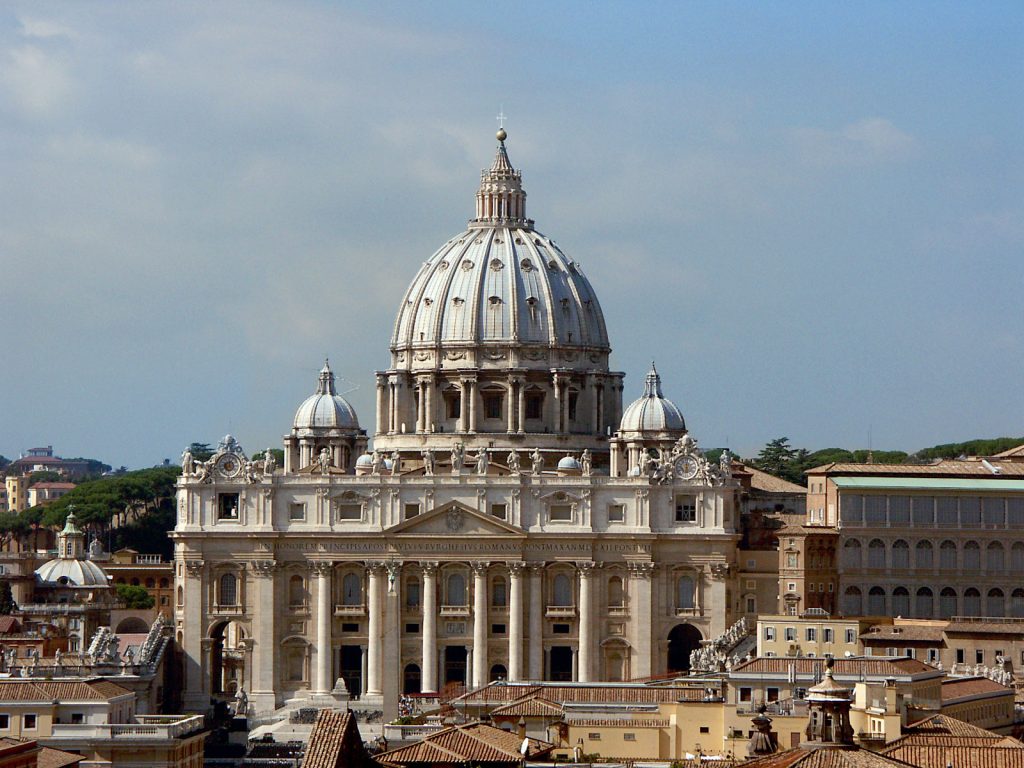
Saint Peter’s Basilica is one of the holiest Catholic sites. Donato Bramante, Michelangelo, Carlo Maderno, and Bernini mostly designed the building. It embodies the artistic transition from Renaissance to Baroque. Crowned by a 433-foot high dome, it is also packed with great masterpieces. These pieces include Michelangelo’s marble sculpture, Pieta.
Read more: What Is The Largest Cathedral In The World
Basilica di Santa Maria Della Salute, Venice (1631-1687)

Basilica di Santa Maria Della Salute served as a token of thanks to the Virgin Mary for delivering the city from the plague. Designed by the Italian architect Baldassare Longhena, the two-domed Basilica features the combination of Greek, Islamic, and classical Baroque structure. The Basilica is one of the city’s most famous landmarks.
St. Paul’s Cathedral, London

Founded in 604, St. Paul’s is a Church of England Cathedral designed by Sir Christopher Wren. As part of the major rebuilding after the Great Fire of London, Wren oversaw the construction of the cathedral. The church’s 365-foot high dome is one of the best-known sights of London.
Melk Abbey, Austria
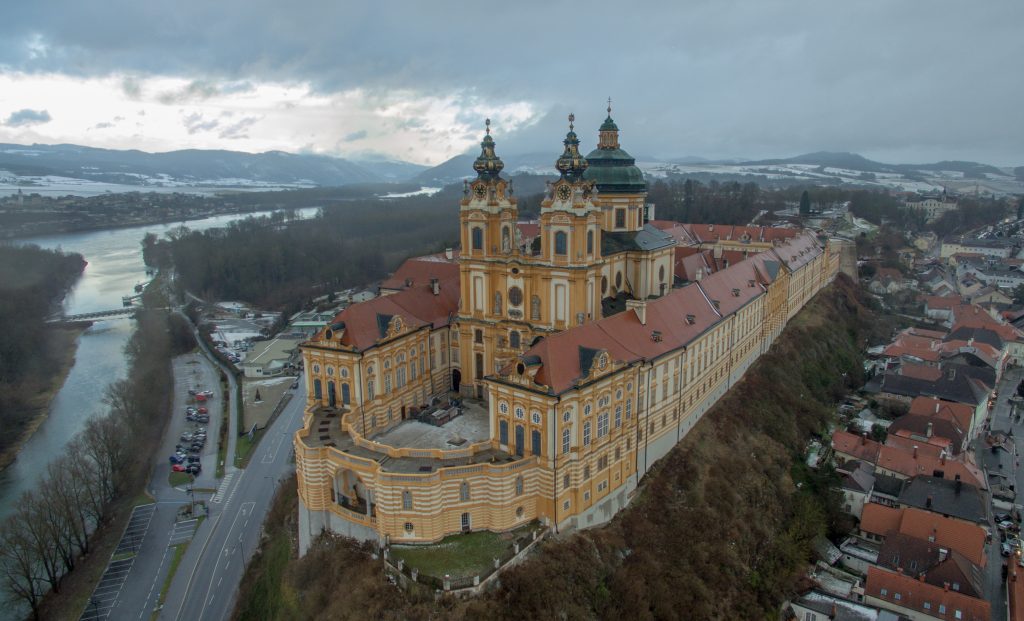
Designed and built by Jakob Prandtauer, Melk Abbey combines Italian Baroque elements with traditional Austrian design. It is on high cliffs overlooking the Danube River and combines a high dome and twin towers. The abbey’s exterior is a mass of undulating surfaces and soaring turrets and towers. While many of Austria’s leading artists decorated the interiors and hallways. Moreover, it also houses some significant features, including the Marble Hall, the Imperial Staircase, and a library containing an extensive collection of rare medieval texts.
Christian Art in the Modern Era
During the 19th century, the kings and noblemen became the priority for art instead of the Church. Consequently, the demand for portraits, topographical landscapes, and other secular works increased rapidly. Interestingly, only in the New World were significant numbers of churches built for the architecture. They chose the revivalist architecture for the structure.
Read more: Baptist Hymnal How Great Thou Art
Baltimore Basilica
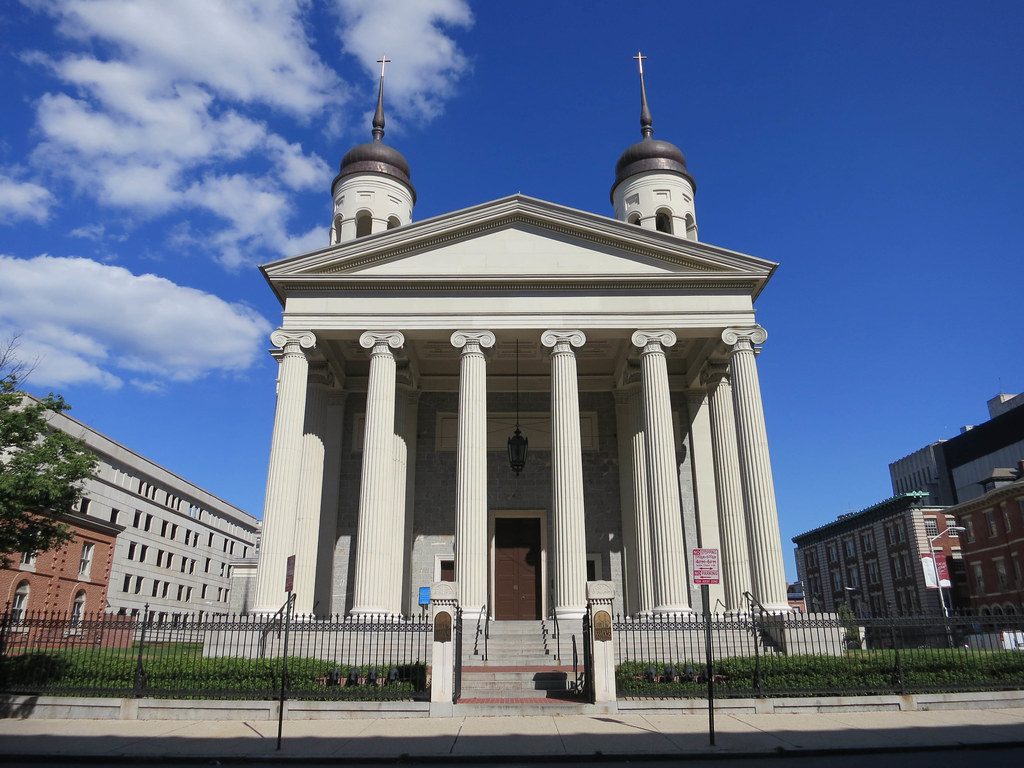
Baltimore Basilica (1806-21) is a neoclassical-style church designed by Benjamin Henry Latrobe. It is the first Roman Catholic Cathedral in the United States.
Sagrada Familia, Barcelona

During the 19th Century, the Sagrada Familia in Barcelona was the only significant innovative example of a Christian church built in Europe. Designed by Antoni Gaudi, the church’s structure focused on the neo-Gothic style. It has a tree-like formation of vaulted structures which includes five towers and twelve campaniles. Made of stone and concrete, the church is embellished in parts with ceramic tiles, pompom finials, and several sculptures.
Christ the Redeemer

Other popular Christian artworks in the modern era are the well-known Christ the Redeemer. It is a huge soapstone statue that overlooks Rio de Janeiro. Designed by Heitor da Silva Costa and sculpted by Paul Landowski, it is the largest Art Deco statue in the world.
Georges Rouault
Georges Roualt is one of the most important Christian artists of the 20th century. He is a French Catholic painter that created numerous expressionist Christian artworks. He is notably known for his series The Holy Face, the Crucifixion, and Christ Mocked.
Read more: 20 Prayers For The World
Marc Chagall
Marc Chagall is a Russian fantasy painter and a well-known artist of the modern era. He is known for his imaginative Jewish art and scenes from the Old Testament. Then, he worked on The Bible Message, which followed his series on religious themes. He also produced a few stained-glass designs for the cathedrals of Metz and Reims. In addition, he also created the Hadassah Synagogue near Jerusalem.
Importance of Christian Art

Christian art plays a major significance in the establishment of faith over the years. They used Christian art to represent, build their identity, and to reach out to a wide audience. We witnessed how this art created an impact on the world. And various Christian art pieces tell us the story from the past. It can be in the form of architecture, sculpture, paintings, and other kinds of art. Moreover, these pieces show the evolution of Christian art from one era to another. And it is a privilege for us to see most of the famous Christian artworks today. It indulges us to know more about Christianity and how it helps Christianity to spread like a wildfire all over the world. Every art piece tells us a story, in conclusion, we should learn to appreciate Christian art more.





